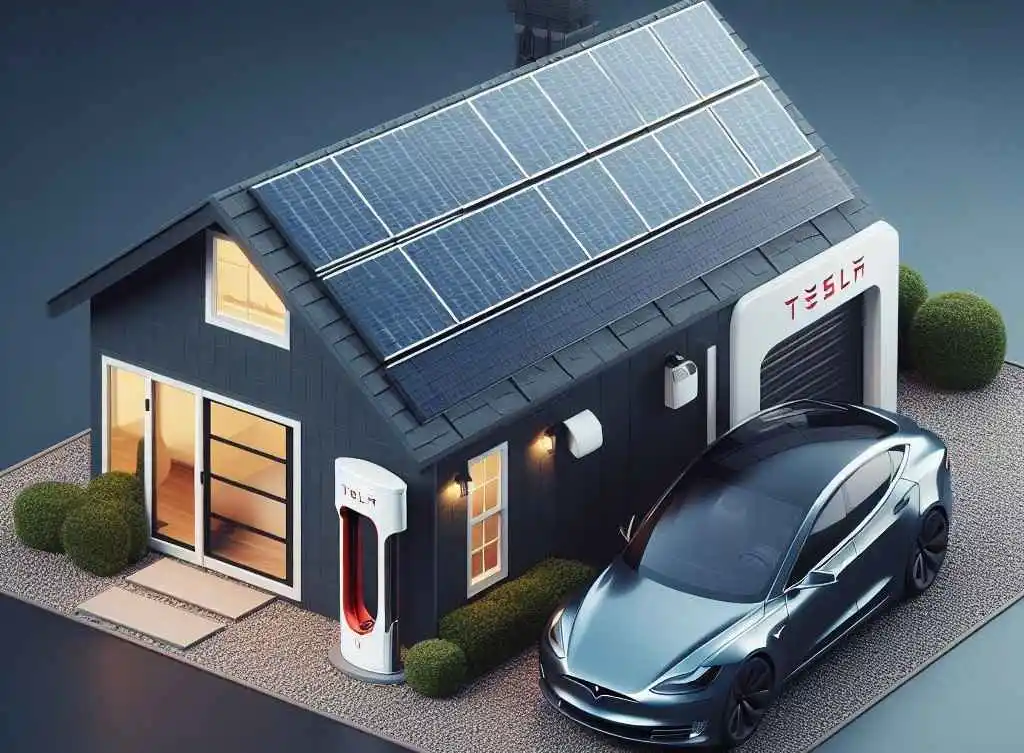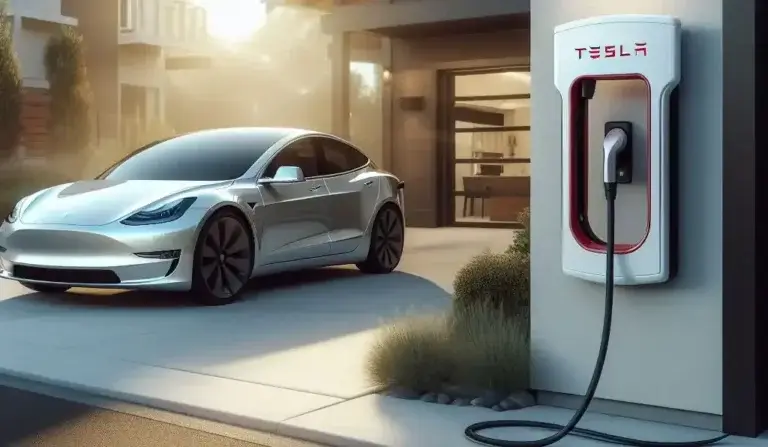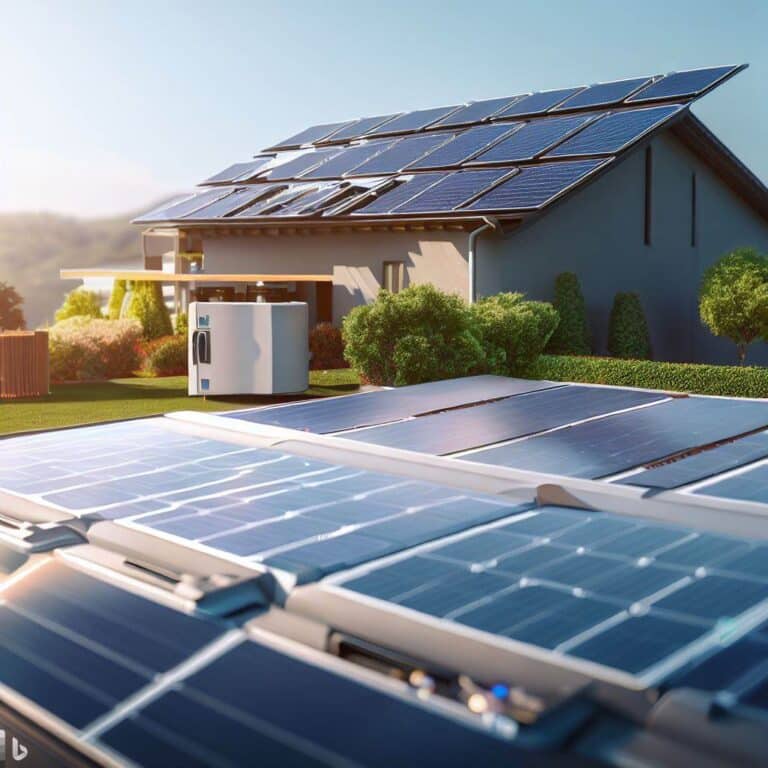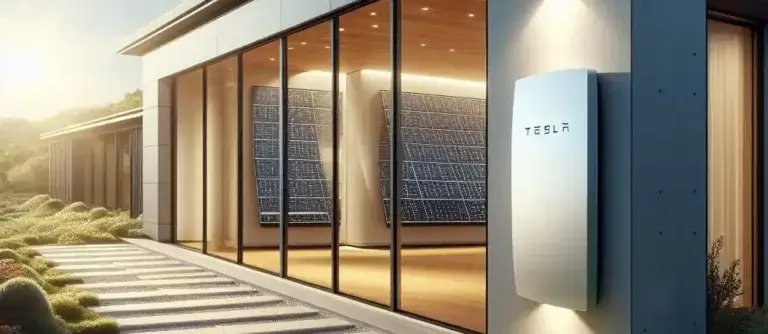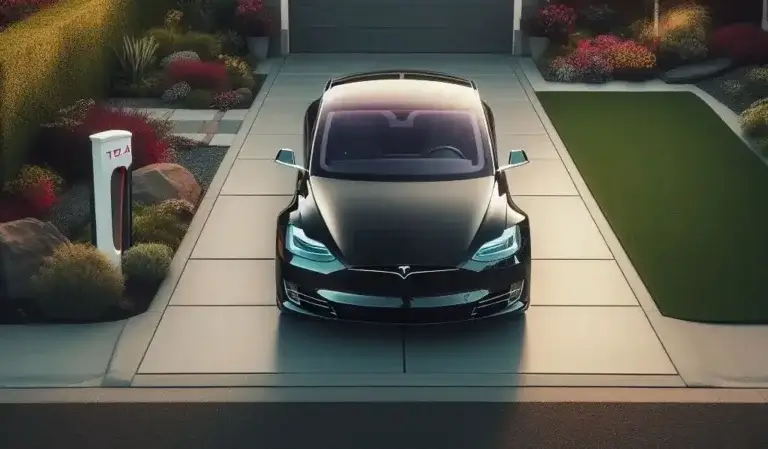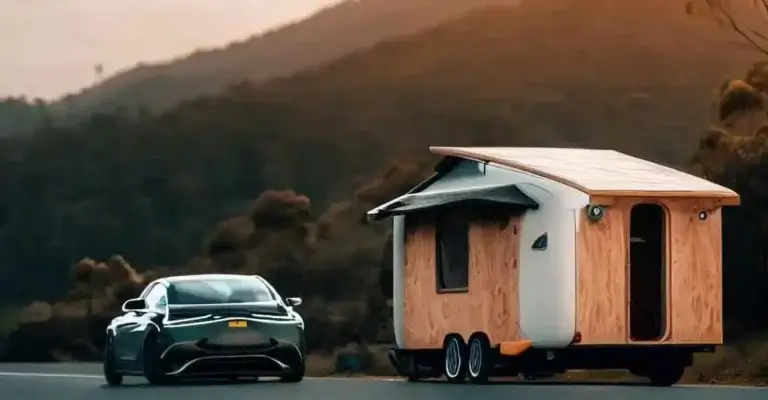How Tesla Solar Panels Work: A Complete Guide to Tesla’s Solar Technology
Tesla solar panels and Powerwall batteries are transforming the solar industry. This in-depth article explains everything you need to know about Tesla’s solar panels, from how they work to costs, warranties, installation, and more.
Tesla solar panels utilize advanced solar cell technology to efficiently convert sunlight into renewable electricity. Combined with the Tesla Powerwall home battery, Tesla solar provides clean energy and energy independence. This article reviews Tesla’s solar panels, Powerwall battery, app control, pricing, warranties, installation, and more – explaining how Tesla solar works and why it’s one of the best solar solutions available today.
Table of Contents
How Do Tesla Solar Panels Work?
Tesla solar panels work like any other solar photovoltaic (PV) panels. They are made up of many individual solar cells that convert sunlight into direct current (DC) electricity.
The solar cells are manufactured from mono- or polycrystalline silicon and tesla solar panels use advanced solar cell technology to maximize efficiency and performance. The panels have an all-black design that blends into roofs for a sleek, high-tech look.
Tesla offers both standard solar panels and solar roof shingles. The standard panels can be installed on tilting racks or directly onto a roof. The solar roof shingles embed solar cells inside durable glass tiles to replace regular roofing materials. Both achieve the same goal of harnessing the sun’s energy.
When sunlight hits the solar cells, electrons are knocked loose from the silicon atoms, creating an electric current. The DC power generated flows to an inverter, which converts it into alternating current (AC) that can power your home and appliances. Any excess solar electricity is fed back to the grid.
What Are the Benefits of Tesla Solar Panels?
Tesla solar panel systems offer several advantages:
- High efficiency – Tesla solar panels have efficiency ratings of up to 22.8%, outperforming many competitors. More efficient panels generate more electricity.
- Premium quality – Built to last, Tesla solar panels use high-quality materials and manufacturing. Tesla offers one of the best solar warranties in the industry.
- All-black aesthetic – Tesla’s solar panels and tiles have an attractive low-profile all-black look.
- Seamless integration – Tesla solar power integrates seamlessly with the Powerwall 2 home battery for 24×7 clean energy.
- Monitoring via app – The user-friendly Tesla app enables real-time solar monitoring and control from anywhere.
- Excellent customer service – Tesla is known for responsive customer service throughout the solar process.
- Clean energy independence – With Tesla solar, you can generate your own emissions-free electricity.
How Does Tesla’s Powerwall Work?
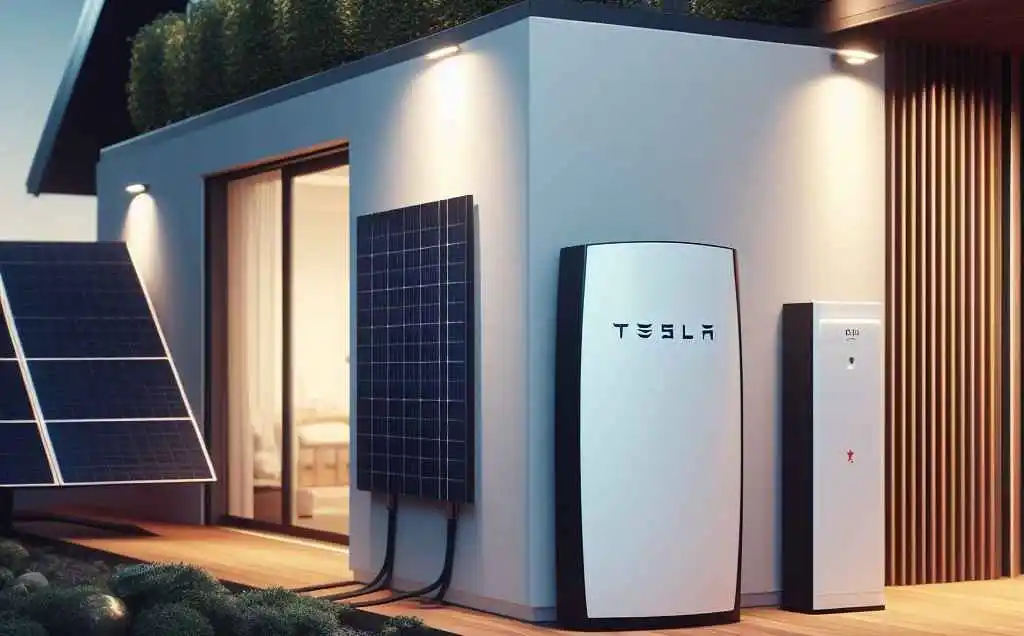
The Tesla Powerwall is a rechargeable home battery that stores solar energy for use at night or during blackouts. It works alongside Tesla solar panels to provide 24/7 renewable power.
Powerwall uses lithium-ion battery technology and advanced software for smart energy management. It has a storage capacity of 13.5 kWh usable / 14 kWh total.
During the day, the Powerwall charges from your solar panels. It supplies power to your home, while excess solar electricity is fed back to the grid. At night, the Powerwall provides stored solar power to your home and appliances.
The Powerwall enables full energy independence by supplying power during grid outages. It also reduces electricity bills by maximizing solar self-consumption. Managing home energy with Powerwall is easy through the user-friendly Tesla app.
Multiple Powerwall batteries can be installed together to increase energy storage capacity. Tesla offers the Powerwall+ with 27 kWh capacity for extra large storage needs.
What Are the Key Components of a Tesla Solar and Battery System?
A complete Tesla solar and energy storage system consists of solar panels, Tesla Solar inverters, Powerwall batteries, and monitoring/control software:
- Tesla Solar Panels – High-efficiency photovoltaic panels convert sunlight into electricity.
- Inverter – Converts the DC power from the solar panels into usable AC power. Tesla’s solar inverter is highly efficient.
- Powerwall Battery – Lithium-ion home battery stores solar energy for 24/7 usage. 13.5 kWh capacity.
- Monitoring Software – The user-friendly Tesla app enables real-time system monitoring, control, and optimization.
- Gateway – The Tesla gateway manages system communication and Internet connectivity.
- Support Structure – Racking, rails, and attachments to mount the solar panels.
- Cabling and conduit – Electrical wires and conduits to connect all components.
This integrated system provides comprehensive solar energy generation, storage and management for optimal renewable energy usage.
What Factors Impact Performance of Tesla Solar Panels?
Several factors affect the performance and electricity output of Tesla solar panels:
- Solar irradiance – Areas with more annual sunshine will generate more solar power.
- Roof orientation – South-facing roofs maximize solar collection in the Northern Hemisphere. Panels should face the equator.
- Roof angle – Optimal panel tilt to match your latitude maximizes energy production.
- Shading – Nearby trees or buildings that shade the panels will reduce output. Minimal shading is ideal.
- Local weather – Solar generation is reduced on cloudier and hotter days. Cooler, sunny weather provides optimal conditions.
- Home energy use – More energy-efficient homes require fewer solar panels to meet your electricity needs.
- Panel efficiency – Higher efficiency solar panels (measured in watts per square meter) will produce more electricity.
Tesla’s solar design software uses satellite imagery, on-site surveys and AI to maximize system performance based on these factors.
What Are the Steps to Install Tesla Solar Panels and Powerwall?
Installing a Tesla solar and Powerwall system involves several key steps:
- Site assessment – Tesla technicians will survey your home’s roof, electric panel, energy use, and shading to design the optimal system.
- Permitting and approvals – Tesla handles permitting paperwork and grid connection approvals from your utility.
- Equipment delivery – Solar panels, Powerwall batteries, and electrical components are delivered to your home.
- Installation – Over 2-3 days, Tesla crews will install racking, solar panels, inverters, Powerwall, and run electrical connections.
- Inspection – The city will inspect the completed installation for compliance with electrical codes.
- Activation – Once approved, Tesla will activate your system and Powerwall. You can monitor via the app.
- Ongoing maintenance – Tesla will provide warranty, monitoring, and maintenance services for the lifetime of your system.
Tesla manages the entire process to ensure your system is optimally designed, permitted, installed and activated with minimal hassle.
How Much Do Tesla Solar Panels and Installation Cost?
The costs of a Tesla solar system include:
- Solar panels – $15,000 to $35,000 depending on home size and energy needs.
- Powerwall battery – $9,500 to $19,000 for 1 to 2 units.
- Inverter, gateway, and electrical equipment – $2,000 to $3,000
- Installation labor – $1,000 to $2,500 based on system size, roof type, and access.
- Permits and inspection fees – $500 to $1,000 depending on city fees.
Total costs for a full Tesla solar and Powerwall system range from $25,000 to $60,000. Actual pricing is customized for your specific home energy requirements.
Many homeowners can take advantage of the 26% federal solar tax credit and additional state incentives to reduce the net cost. Tesla also offers flexible financing and solar loan options.
What Are the Ongoing Costs of Tesla Solar Panels?
After Solar Panel installation, owning a Tesla solar system involves minimal ongoing costs:
- Inverter replacement – The solar inverter may need replacement after 10-15 years ($1,000 cost).
- Powerwall battery replacement – The Powerwall warranty covers the battery for 10 years. Out-of-warranty replacement costs around $5,000.
- System monitoring – Tesla charges a $10 per month fee for real-time monitoring and control via the app.
- Maintenance and repairs – Occasional cleaning and minor repairs ($100 per year). Major repairs are rare and covered under warranty.
- Home insurance – Inform your provider; they may charge slightly more for home insurance.
Overall, Tesla solar panels are very low maintenance. Monitoring software, battery replacements, and inverter upgrades represent the main costs beyond the initial purchase and installation.
What Type of Warranty Comes with Tesla Solar Panels and Powerwall?
Tesla offers an industry-leading warranty package on their solar and energy storage products:
- Solar Panel Workmanship Warranty – 12 years
- Solar Panel Performance Warranty – 30 years
- Powerwall Workmanship Warranty – 10 years
- Powerwall Capacity Retention Warranty – 10 years minimum 70% retention.
Essentially, all components are covered for defects and underperformance for at least 10 years. Solar panels have extra coverage up to 30 years.
The Tesla warranty covers the repair or replacement of defective parts. One of the strongest solar warranties available, providing long-term peace of mind.
How Long Do Tesla Solar Panels Last?
Tesla solar panels and Powerwall batteries are built to last 25 to 30+ years. Here are the lifespan estimates for each component:
- Solar panels – Typically maintain very high performance for 25-30 years. Will continue generating energy beyond this lifespan.
- Inverters – Last 10-15 years. May need replacement mid-system life.
- Powerwall batteries – 10-year warranty. May need replacement after 10-15 years. New batteries can be installed in the same enclosure.
- Monitoring and control hardware – Lifespan of 10 to 15 years before replacement is needed. Can be easily upgraded.
With proper maintenance, a Tesla solar and storage system will provide renewable energy for decades while minimizing operating costs. The overall lifespan matches most traditional roofing systems.
Does Tesla Handle Maintenance and Repairs?
Yes, Tesla provides comprehensive maintenance and repair services for their solar and energy storage products over their lifetime:
- Remote monitoring and diagnostics – Tesla proactively monitors system performance and remotely diagnoses any issues.
- Warranty repairs and replacements – Defective parts covered under warranty will be repaired or swapped out by Tesla.
- Technical support – Tesla solar experts are available via phone and email to troubleshoot any problems.
- Software updates and upgrades – Tesla continually improves performance and capabilities through remote software updates.
- Preventative maintenance – Tesla technicians conduct occasional preventative maintenance checks on-site to maximize operational lifespan.
- System retrofits and upgrades – As technology improves, Tesla can replace outdated system components to keep your system updated.
Tesla aims to provide complete ongoing system support. This enables optimal performance, regular improvements, and minimal maintenance costs over your system’s lifetime.
Does Tesla Sell and Install Solar Nationwide?
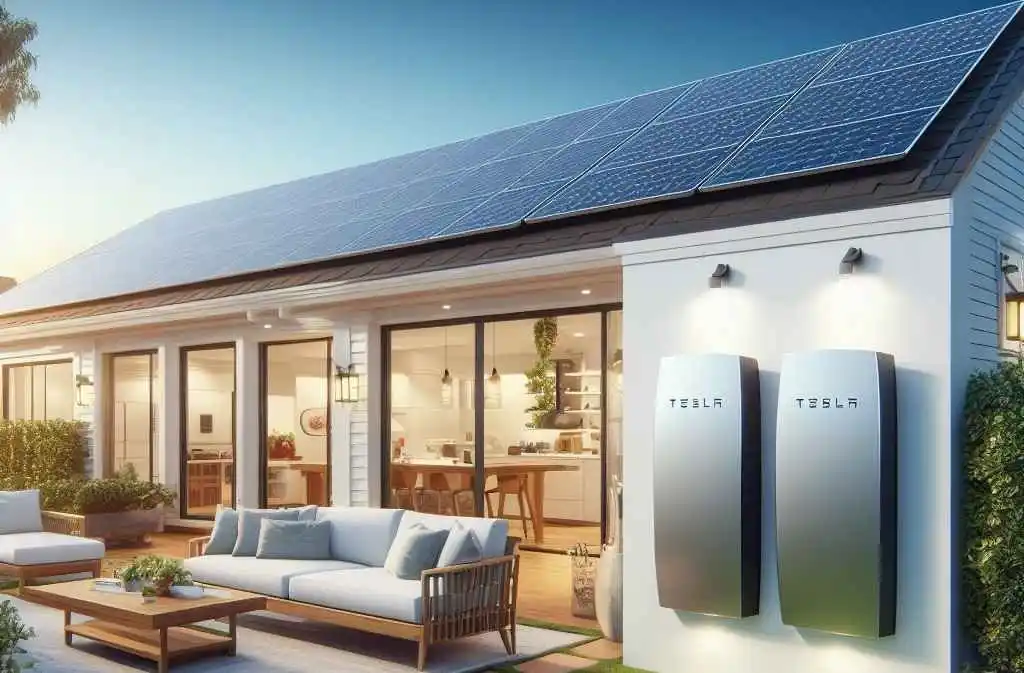
Tesla Energy currently offers solar panel and Powerwall installation in 27 U.S. states and territories:
- Arizona
- California
- Colorado
- Connecticut
- Florida
- Hawaii
- Massachusetts
- Maryland
- New Hampshire
- New Jersey
- New Mexico
- New York
- Oregon
- Pennsylvania
- Puerto Rico
- Rhode Island
- South Carolina
- Texas
- Utah
- Vermont
- Virginia
- Washington
- Washington D.C.
Tesla focuses its solar services in regions with high solar potential and strong adoption. They continue to expand their coverage across the U.S.
If Tesla does not currently operate in your state, they can refer you to a trusted local solar installer partner. You can still purchase solar panels and Powerwall from Tesla.
Does Tesla Design and Install Commercial Solar Systems?
Yes, in addition to residential solar, Tesla Energy provides commercial solar and battery systems. Their commercial division is called Tesla Energy Ventures.
Tesla Energy designs, installs and manages customized solar and storage solutions for:
- Businesses
- Schools
- Government Facilities
- Hotels
- Apartment Buildings
- Retail Stores
- Warehouses
Commercial systems range from 30 kilowatts up to multi-megawatt sizes. Tesla offers options for rooftop, carport, ground-mount and virtual power plant installations.
For large commercial projects, Tesla will develop and finance your solar system, enabling access to solar savings and sustainability benefits with minimal upfront costs.
How Tesla Solar Panels Work Step by Step
Tesla solar panels work by converting sunlight into electricity through the photovoltaic effect. Here’s a step-by-step overview:
- Sunlight strikes the anti-reflective coating on the tempered glass surface of Tesla solar panels.
- The sunlight passes through the glass to hit the solar cells made of silicon inside the panel.
- The energy from the sunlight knocks electrons loose in the silicon, causing them to flow and generate a DC electric current.
- The DC current passes through connecting wires to an inverter.
- The inverter converts the DC electricity into AC current that is compatible with your home’s electrical system.
- The AC electricity first supplies power to run your home’s lights, appliances, etc.
- Any excess AC electricity is then fed back to the utility grid, spinning your electricity meter backwards.
- At night or when solar production is low, your home draws supplemental power from the grid as needed.
So in summary, sunlight generates solar electricity that is inverted to AC to power the home, while any extra gets exported to the grid – all automatically!
Are Tesla Solar Panels Worth It?
Yes, Tesla solar panels are worth the investment for most homeowners due to the long-term cost savings, energy independence, environmental benefits, and advanced system capabilities they provide.
The high efficiency premium solar panels and Powerwall batteries from Tesla provide greater electricity offset compared to alternatives. Advanced monitoring via the Tesla app also enables detailed tracking and control of energy usage.
While Tesla solar costs more upfront than some competitors, the superior equipment, capabilities, projected electricity bill savings of 50-100%, and strong Tesla brand make the added investment worthwhile for many homeowners. The 30% federal tax credit and additional incentives also improve the return on investment.
For a premium solar experience that generates clean energy for decades, enhances energy resiliency, and provides an advanced integrated platform, Tesla solar delivers significant long term value.
How Do I Know if My Roof Is Suitable for Tesla Solar?
To assess if your roof is suitable for a Tesla solar installation, they consider:
- Roof age and condition – Tesla solar can be installed on any roof younger than 20 years that’s in good shape.
- Roof type – Tesla solar works on most roof types including asphalt shingles, tile, tin, and flat roofing.
- Roof orientation – South-facing roofs are ideal but east/west or flat roofs also work. North-facing roofs will produce less energy.
- Roof pitch and angle – Tesla requires a roof pitch between 2:12 and 6:12. They can customize the racking tilt.
- Roof size and square footage – The roof must have enough physical area for your planned solar array.
- Shading – Minimal roof shading from trees or structures is best. Some shading is manageable.
- Structural integrity – The roof structure must be able to support the additional weight of the panels and hardware.
- Attic access – Accessing your attic facilitates easier solar panel wiring.
Tesla will thoroughly evaluate your specific roof during a home assessment. In most cases, they can design a solar system for any roof meeting the above criteria.
Does Tesla Solar Require a Battery?
No, Tesla’s solar offering comes with flexible options:
- Solar only – You can install just solar panels without the Powerwall battery. Excess daytime solar electricity will be exported to the grid. You would still draw power from the grid when solar output is low.
- Solar + Powerwall – Adding Powerwall provides solar energy storage for usage during the evening and nighttime hours, or during a power outage.
- Powerwall only – It’s also possible to install just the Powerwall without solar panels if you want home backup power. The battery can charge from the grid.
Tesla offers solar with or without Powerwall based on your needs and preferences. The battery maximizes energy independence and bill savings.
Does Tesla Require a Long-Term Contract?
Tesla used to require 20-year solar power purchase agreements. However, they now offer more flexible contract options:
- Monthly lease – No long-term contract required. Upgrade or cancel anytime with 30 days notice.
- 12-month prepay – Prepay for 12 months of solar access. Downgrade or cancel anytime after 12 months.
- Purchase – Buy your Tesla solar system outright with flexible financing. Immediately own the system on your home.
Tesla’s contract-free month-to-month lease provides the flexibility to cancel anytime. Purchasing or 12-month prepay offer longer-term savings and ownership. Choose the option best for your needs.
How Does Tesla Solar Compare to Other Providers?
Tesla Solar stands out among other major solar panel manufacturers and installers:
- All-inclusive pricing with no hidden fees or gotchas.
- Premium solar equipment including industry-leading panels and batteries.
- Focus on great customer service and experience.
- Advanced system monitoring and control via user-friendly app.
- Integrated experience when adding Powerwall home batteries.
- Flexible contract options including monthly.
- Strong 25-year warranties on solar panels.
For a streamlined, high-quality solar experience from sales to installation to service, Tesla stands above most competitors. They continue leading innovation in residential energy technology.
Does Tesla Provide Solar Financing Options?
Yes, Tesla offers several flexible financing options to go solar for low upfront costs:
- Loan – Borrow funding to purchase your system and pay it off over time. Make predictable monthly payments with fixed low-interest rates.
- Lease – Lower monthly payments by leasing your system from Tesla. Payments increase 2.9% annually.
- Rent – Tesla’s rental option provides solar access with low monthly payments, upgrades anytime, and 30-day cancellation notice.
- Power Purchase Agreement – Pay only for the electricity generated; Tesla owns/maintains the system. Lower costs than utility rates.
Tesla works with several financing partners to provide solar loans, leases, and PPAs tailored to your needs. Install solar now for less upfront cost.
How Soon Does Tesla Install Solar After Ordering?
Tesla provides a streamlined process from solar purchase to install:
- Order to survey – 4 weeks (may be faster)
- Survey to permit – 4-6 weeks
- Permit to install – 4-6 weeks
- Install to operation – 1-2 days for system activation
Total timeline – Around **3 to 5 months** from order to solar operation, depending on your location and permitting department.
Tesla Energy is expanding installation crews nationwide to handle growing demand. They aim to shorten project timeframes further as they
Key Takeaways on Tesla Solar
To summarize, here are the key takeaways on Tesla’s solar and energy storage systems:
- Tesla solar panels generate clean, renewable electricity from sunlight via photovoltaic cells.
- Highly efficient panels and seamless integration with Powerwall home battery for 24/7 solar energy.
- Monitoring and control via user-friendly Tesla smartphone app.
- Premium equipment including industry-leading solar panels and lithium-ion batteries.
- End-to-end service from consultation to installation to support.
- Flexible purchase, lease, and power purchase agreement options.
- Projected cost savings of 50% to 100% on electricity bills.
- Federal tax credits and additional incentives reduce net system cost.
- Limited maintenance required beyond occasional cleaning.
- Strong warranties back major system components for 10-25 years.
- Lasts 25-30+ years with maximized electricity production over a lifetime.
- An easy way to lower the carbon footprint and achieve energy independence.
Conclusion
Tesla solar and energy storage provides a revolutionary solution for homeowners seeking clean, sustainable power. By harnessing the abundant power of the sun and enabling smart battery storage, Tesla solar delivers lower electric bills, energy security, and environmental benefits.
Tesla stands out with their premium equipment, integrated platform, and superior customer experience. While upfront costs are higher than some competitors, the long-term savings and advanced monitoring/control features justify the investment for many homeowners.
As Tesla continues ramping production at their Solar Roof factory in Buffalo and expanding installation crews across the country, they are making solar options more affordable and accessible. With Tesla solar, you’re investing in the future of energy – your future.
Frequently Asked Questions
How is Tesla expanding solar manufacturing capacity?
Tesla is rapidly expanding production of solar panels and solar roof tiles. Their factory in Buffalo, NY aims to manufacture enough solar tiles to install up to 1,000 roofs per week. Tesla also works with partner manufacturers to produce traditional solar panels at high volumes.
Do the solar tiles block light or make the roof darker?
Tesla’s integrated solar glass roof tiles allow light to pass through while generating electricity. They are designed to provide the same or better light transmittance as traditional roofing materials, so your attic space stays bright.
Can I add more Tesla solar panels later?
Yes, you can easily expand your Tesla solar system over time by adding more panels and batteries as your energy needs increase. Any additional equipment is integrated with your existing system.
Does Tesla provide help applying for solar tax credits and incentives?
Tesla has solar experts who handle the full incentive application process for you. They’ll ensure you receive all eligible federal tax credits and state/local incentives and rebates to reduce your system cost.
Is the Tesla Solar Roof more prone to breakage or damage than a shingle roof?
Independent testing by Consumer Reports and the National Renewable Energy Laboratory confirms Tesla’s durable glass solar tiles can withstand heavy impacts from hail, falling branches, and other debris just as well as conventional roofing materials.
What happens if I need to replace my roof in the future?
If your roof needs replacement, Tesla can uninstall then reinstall your solar system when the new roof is ready. They take care of properly removing and reconnecting the panels, batteries, wiring and racking. Your existing system will integrate seamlessly with the new roof.
Can I purchase a solar system outright from Tesla without any financing?
Yes, you have the option to purchase a Tesla solar system outright without any financing or loan. While the upfront cost will be higher, you’ll immediately own the system and maximize long-term savings.
How do I know if my roof framing can support solar panels?
The site assessment team will conduct structural calculations based on your roof’s age, rafter type, and panel weight to confirm it can support the solar array. Most modern roof structures are adequate, but framing upgrades can be made if needed.
We hope this guide provided you with a comprehensive overview of how Tesla solar and energy products work. Please contact us for any additional questions or to discuss solar options for your home. The future is bright – go solar with Tesla!

